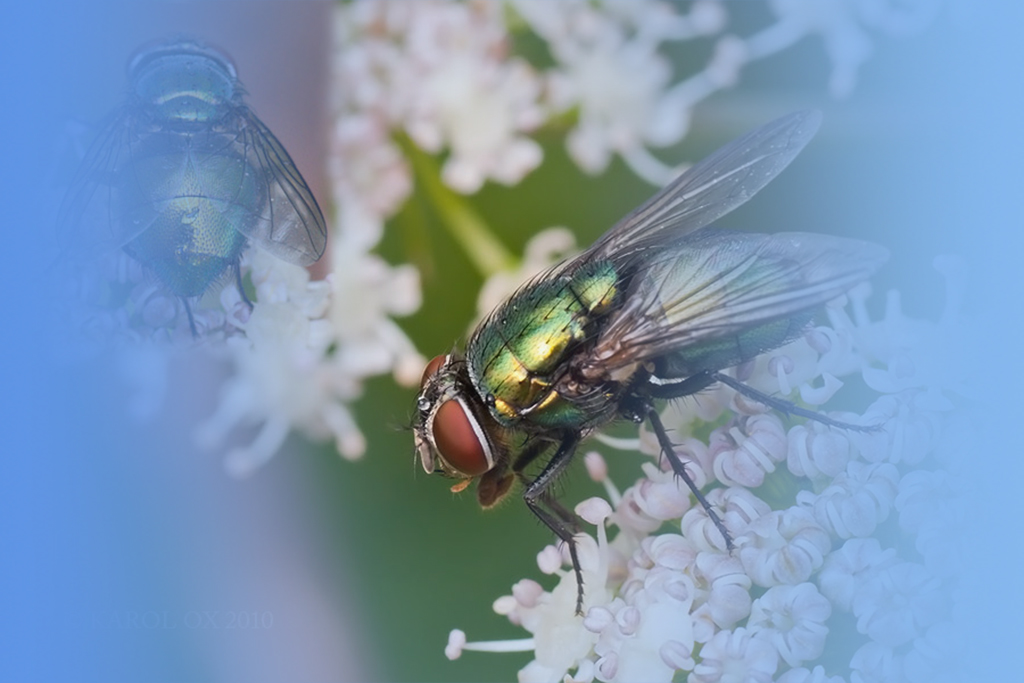[1] Gong ZY, Liu QY, Hou J, et al. Integrated monitoring of mosquitoes and mosquito-borne diseases in Zhejiang province[J]. Chin J Vector Biol Control, 2010, 21(3):184-187. (in Chinese) 龚震宇, 刘起勇, 侯娟, 等. 浙江省蚊虫及蚊媒传染病综合监测研究[J]. 中国媒介生物学及控制杂志, 2010, 21(3):184-187.
[2] Li CM, Tang JX, Cai YS, et al. Population structure and seasonal dynamics of mosquitoes in different types of residential areas[J]. Chin J Schistosomiasis Control, 2017, 29(6):720-724, 787. DOI:10.16250/j.32.1374.2017165.(in Chinese) 李传明, 唐建霞, 蔡扬生, 等. 城市不同类型住宅区蚊虫种群结构及季节消长分析[J]. 中国血吸虫病防治杂志, 2017, 29(6):720-724, 787. DOI:10.16250/j.32.1374.2017165.
[3] Auerswald H, Maquart PO, Chevalier V, et al. Mosquito vector competence for Japanese encephalitis virus[J]. Viruses, 2021, 13(6):1154. DOI:10.3390/v13061154.
[4] Zheng XM. Zhejiang physical geography field practice tutorial[M]. 2nd ed. Beijing:Science Press, 2021:1-10. (in Chinese) 郑祥民. 浙江自然地理学野外实习教程[M]. 2版. 北京:科学出版社, 2021:1-10.
[5] Zeng JQ, Li CH, Zhang H, et al. The current status of outbreaks of mosquito-borne viral diseases and advances in the study of pathogen detection techniques[J]. J Parasit Biol, 2021, 16(6):728-730. DOI:10.13350/j.cjpb.210623.(in Chinese) 曾嘉庆, 李成辉, 张赫, 等. 蚊媒病毒病流行现状及病原学检测技术研究进展[J]. 中国病原生物学杂志, 2021, 16(6):728-730. DOI:10.13350/j.cjpb.210623.
[6] Van den Eynde C, Sohier C, Matthijs S, et al. Japanese encephalitis virus interaction with mosquitoes:A review of vector competence, vector capacity and mosquito immunity[J]. Pathogens, 2022, 11(3):317. DOI:10.3390/pathogens11030317.
[7] Wu LZ, Zhang YJ, Li XQ. Analysis of the monitoring results of mosquitoes carrying encephalitis B virus in Xianju County, Zhejiang Province, China[J]. Mod Practical Med, 2017, 29(6):780-781. DOI:10.3969/j.issn.1671-0800.2017.06.043. (in Chinese) 吴灵芝, 张意坚, 李笑琴. 浙江省仙居县蚊虫携带乙型脑炎病毒的监测结果分析[J]. 现代实用医学, 2017, 29(6):780-781. DOI:10.3969/j.issn.1671-0800.2017.06.043.
[8] Aryaprema VS, Steck MR, Peper ST, et al. A systematic review of published literature on mosquito control action thresholds across the world[J]. PLoS Negl Trop Dis, 2023, 17(3):e0011173. DOI:10.1371/journal.pntd.0011173.
[9] Yan J, He LH. Advances in research on impacts of geographical landscape factors on mosquito density[J]. Chin J Vector Biol Control, 2017, 28(2):193-196. DOI:10.11853/j.issn.1003.8280.2017.02.028.(in Chinese) 严杰, 何隆华. 地理景观因素对蚊虫密度影响研究进展[J]. 中国媒介生物学及控制杂志, 2017, 28(2):193-196. DOI:10.11853/j.issn.1003.8280.2017.02.028.
[10] Huang QZ. Simplified atlas of pest control[M]. Beijing:Science Press, 2018:33-35. (in Chinese) 黄清臻. 有害生物防制简明图谱[M]. 北京:科学出版社, 2018:33-35.
[11] Li CY, Chen XG. Research and application progress of Aedes albopictus monitoring and control techniques[J]. China Trop Med, 2018, 18(7):732-736, 739. DOI:10.13604/j.cnki.46-1064/r.2018.07.26.(in Chinese) 李晨颖, 陈晓光. 媒介白纹伊蚊监测和控制技术研究及应用进展[J]. 中国热带医学, 2018, 18(7):732-736, 739. DOI:10.13604/j.cnki.46-1064/r.2018.07.26.
[12] Liu QM, Hou J, Wei LY, et al. Surveillance of insecticide resistance and density of the dengue vector Aedes albopictus in four prefectures of Zhejiang Province, China, 2018[J]. Chin J Vector Biol Control, 2020, 31(3):263-267. DOI:10.11853/j.issn.1003.8280.2020.03.004.(in Chinese) 刘钦梅, 侯娟, 韦凌娅, 等. 浙江省4个地区2018年登革热媒介白纹伊蚊密度及抗药性监测[J]. 中国媒介生物学及控制杂志, 2020, 31(3):263-267. DOI:10.11853/j.issn.1003.8280.2020.03.004.
[13] Paupy C, Delatte H, Bagny L, et al. Aedes albopictus, an arbovirus vector:From the darkness to the light[J]. Microbes Infect, 2009, 11(14/15):1177-1185. DOI:10.1016/j.micinf.2009.05.005.
[14] Zhou MH, Chu HL. Handbook for classification and identification of main vectors[M]. Suzhou:Suzhou University Press, 2019:13-26. (in Chinese) 周明浩, 褚宏亮. 常见病媒生物分类鉴定手册[M]. 苏州:苏州大学出版社, 2019:13-26.
[15] Zhu CT, Liu ZG, Jing X, et al. Study on the blood feeding habits of common mosquitoes in Shandong Province[J]Chin J Hyg Insectic Equip, 2006, 12(3):230-231. (in Chinese) 朱传泰, 刘作功, 景晓, 等.山东地区常见蚊种嗜血习性的研究[J].中华卫生杀虫药械, 2006, 12(3):230-231.
[16] Wu YY, Ling F, Gong ZY. Surveillance for mosquito density and species in Zhejiang, 2011-2013[J]. Dis Surveill, 2015, 30(6):497-500. DOI:10.3784/j.issn.1003-9961.2015.06.016.(in Chinese) 吴瑜燕, 凌锋, 龚震宇. 2011-2013年浙江省用灯诱法的蚊密度及变化趋势分析[J]. 疾病监测, 2015, 30(6):497-500. DOI:10.3784/j.issn.1003-9961.2015.06.016.
[17] Swan T, Russell TL, Staunton KM, et al. A literature review of dispersal pathways of Aedes albopictus across different spatial scales:Implications for vector surveillance[J]. Parasite Vector, 2022, 15(1):303. DOI:10.1186/s13071-022-05413-5.
[18] Liu QY. Sustainable vector management strategy and practice:Achievements in vector-borne diseases control in new China in the past seventy years[J]. Chin J Vector Biol Control, 2019, 30(4):361-366. DOI:10.11853/j.issn.1003.8280.2019.04.001.(in Chinese) 刘起勇. 媒介生物可持续控制策略和实践:新中国70年媒介生物传染病控制成就[J]. 中国媒介生物学及控制杂志, 2019, 30(4):361-366. DOI:10.11853/j.issn.1003.8280.2019.04.001.
[19] Liu QY, Meng FX, Lu L, et al. Exploring the road to sustainable vector control in China[J]. Chin J Vector Biol Control, 2006, 17(4):261-264. DOI:10.3969/j.issn.1003-4692.2006.04.001.(in Chinese) 刘起勇, 孟凤霞, 鲁亮, 等. 探索中国病媒生物可持续控制之路[J]. 中国媒介生物学及控制杂志, 2006, 17(4):261-264. DOI:10.3969/j.issn.1003-4692.2006.04.001.
[20] Chen EF, Guo S, Huang WZ, et al. The mosquito control and evaluation system of "mosquito-free village" construction in rural areas[J]. Prev Med, 2019, 31(3):217-220. DOI:10.19485/j.cnki.issn2096-5087.2019.03.001.(in Chinese) 陈恩富, 郭颂, 黄文忠, 等. 农村蚊虫防制和“无蚊村”建设评价指标体系[J]. 预防医学, 2019, 31(3):217-220. DOI:10.19485/j.cnki.issn2096-5087.2019.03.001.
[21] Ni J, Wang JN, Fang CF, et al. A review of the latest control strategies for mosquito-borne diseases[J]. China CDC Wkly, 2024, 6(33):852-856. DOI:10.46234/ccdcw2024.183.
[22] Lin GH, Yu JL. Wenzhou Dongtou District, Zhejiang, pilot "mosquito-free island" to create a "healthy countryside"[J]. Popul Health, 2019(7):73. (in Chinese) 林国辉, 余建林. 浙江温州洞头区试点“无蚊岛”创建 建设“健康乡村”[J]. 人口与健康, 2019(7):73. |



